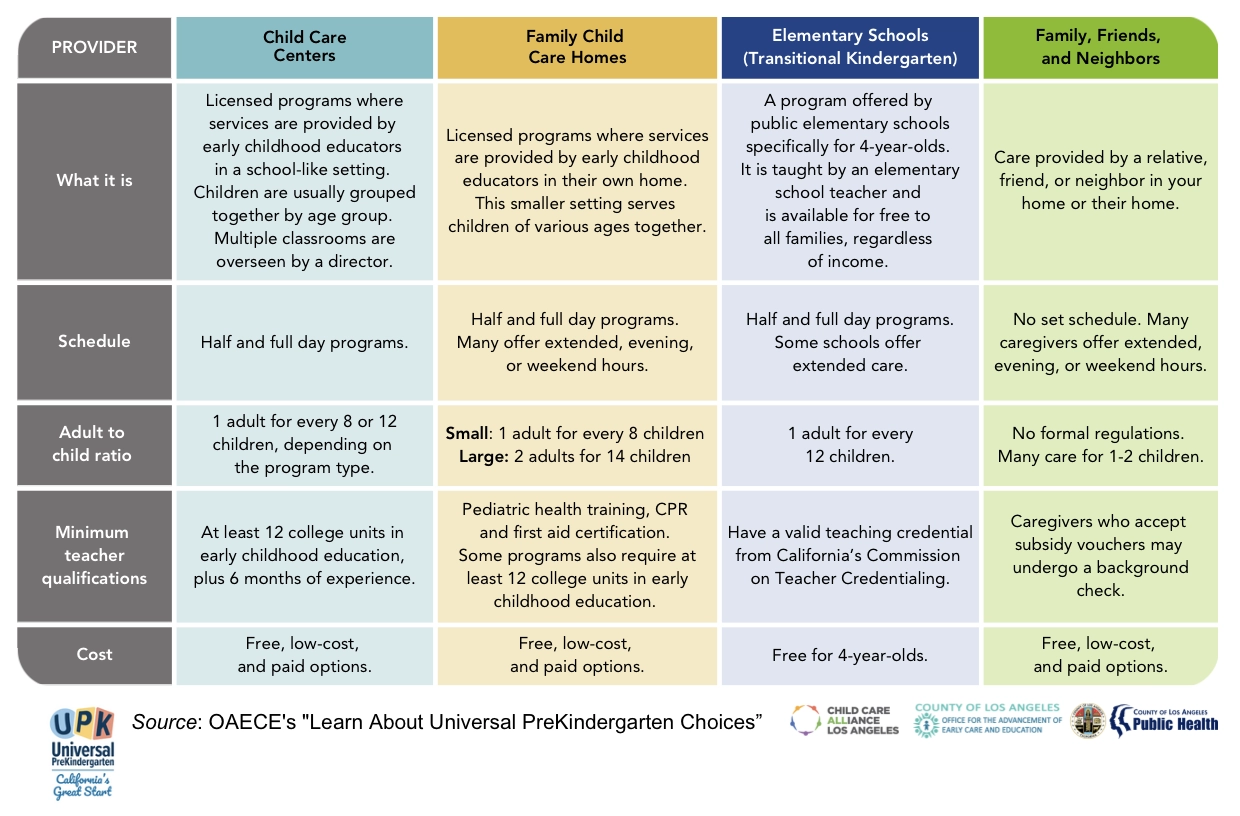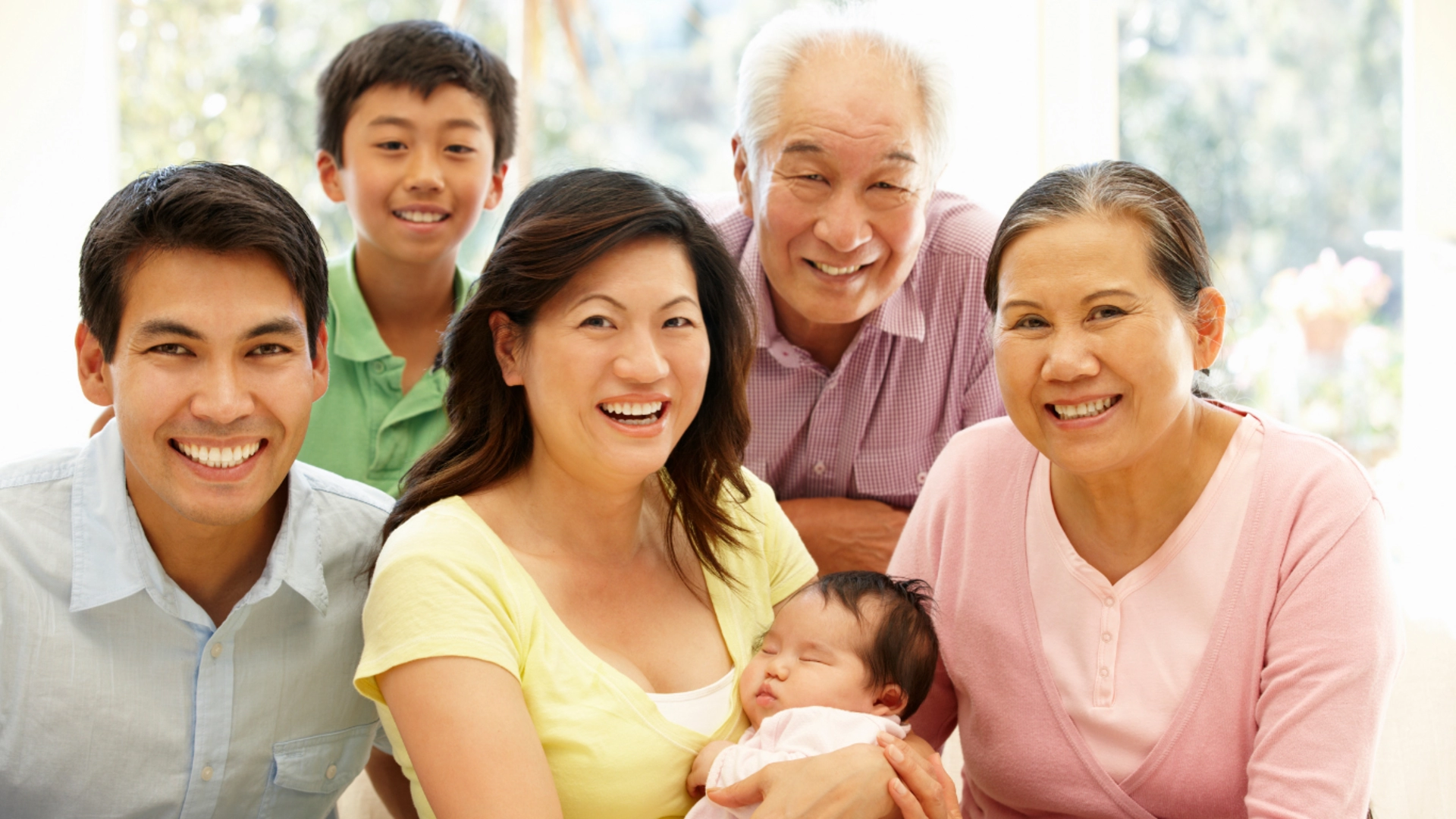
Explore this page to better understand the early care and education (ECE) options available to families in Los Angeles. From home-based care to preschool programs in schools and centers, LA’s child care system offers a variety of choices to meet your family’s needs.
Child Care, Early Care and Education (ECE), and Early Childhood Education (ECE) are all terms used to refer to care for young children who are not yet required to attend school. These terms may be used interchangeably on CIFD’s website and in the linked resources.

What is Universal Prekindergarten (UPK)?
Universal PreKindergarten (UPK) is California’s way of providing early care and education choices for 3-and 4-year-old children. Through UPK, all families in California can access prekindergarten programs regardless of their income or immigration status. UPK does not refer to a particular early care and education program. Rather, it is the umbrella term encompassing all licensed programs for 3- and 4-year-old children across various settings including child care centers, family child care homes, and transitional kindergarten. To learn more, see LA County’s infosheet on UPK.
Key Terms
- California Department of Social Services (CDSS), Community Care Licensing Division (CCLD)
State agency that licenses and provides oversight over child care programs in the State of California.
- Child Care Center
A child care facility of any capacity, other than a family child care home, in which non-medical care and supervision is provided for infant to school age children in a group setting for less than 24 hours per day.
- Early Care and Education (ECE, early childhood education)
Typically refers to child care provided to younger children ages 0-5.
- Family Child Care Home (FCC, FCCH, family day care home)
A facility that regularly provides care, protection, and supervision for fourteen or fewer children, in the provider’s own home, for periods of less than 24 hours per day, while the parents or guardians are away. Homes include but are not limited to apartments, condos, townhomes, and single-family homes.
- Small Family Child Care Home: A facility that provides care, protection, and supervision for eight or fewer children, including children under 10 years of age who reside at the home.
- Large Family Child Care Home: A facility that provides care, protection, and supervision for nine to fourteen children, including children under 10 years of age who reside at the home. To operate as a large family child care home, there must be a licensed provider and an assistant.
- Family, Friends, and Neighbors (FFN)
Child care from a family member, friend, neighbor, or nanny that is provided in the child’s home or the home of the adult providing care.
- Home-based child care (HBCC)
An umbrella term for child care that is provided from personal residences that includes both Family Child Care Homes and Family, Friend, and Neighbor care.
- Local Educational Agency (LEA)
An umbrella term that includes school districts, County offices of education, and charter schools.
- Resource & Referral Agency (R&R)
Publicly funded local agencies that help families access child care and provide support to child care programs and educators.
- Subsidy
Child care payment assistance for income-eligible families.
- Transitional Kindergarten (TK)
The first year of California’s two-year kindergarten program that provides free care and education for four-year-olds.
- Universal PreKindergarten (UPK)
An initiative of the State of California to meet the diverse ECE needs of three- and four-year-olds by supporting the mixed-delivery system of care, including transitional kindergarten, subsidized child care programs, and private child care programs.




